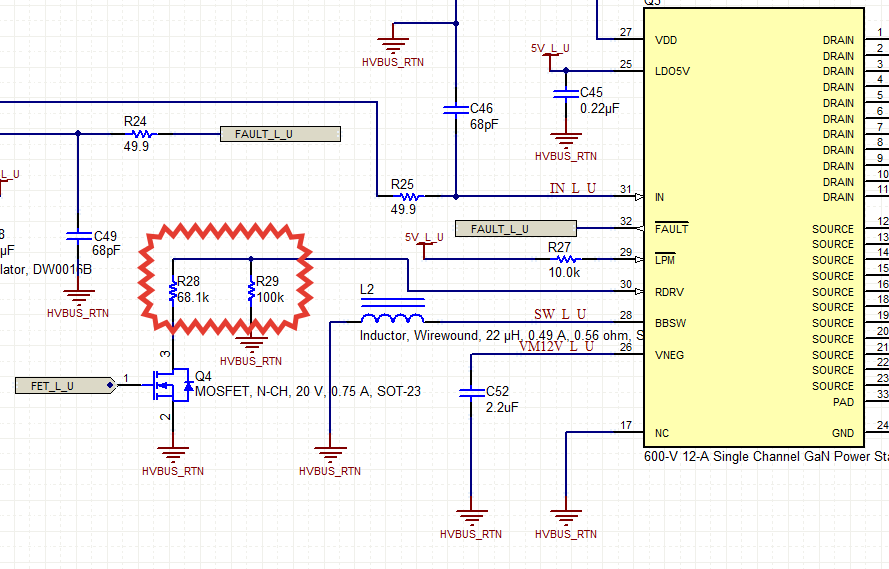Part Number: TIDA-01455
In the TIDA-01455 reference design, there are different RDRV resistors for top and bottom switches. They are defining the slew rate of the transient process of the GAN switch.
In the top switch, 100k resistor is used while in the bottom switch the parallel connection of 100k and 68k resistors. If I'm understanding it correctly, it gives different slew rates for switches. Why?
Top switch:
Bottom switch:
How to choose the slew rate correctly?
By the way, in the bill of materials, there is no Q4 MOSFET which enables 68k additional resistance (while Q4 persists on the scheme). Why? Maybe it is somehow related to the first question: maybe we need only one 100k resistor without 68k in parallel?
Do we really need this transistor Q4 in a 3-phase inverter for bootstrap capacitors charge? And how to determine proper resistance in the bootstrap charging process? Maybe it will be enough to reduce the initial PWM cycle time for the bottom switches during charging?



